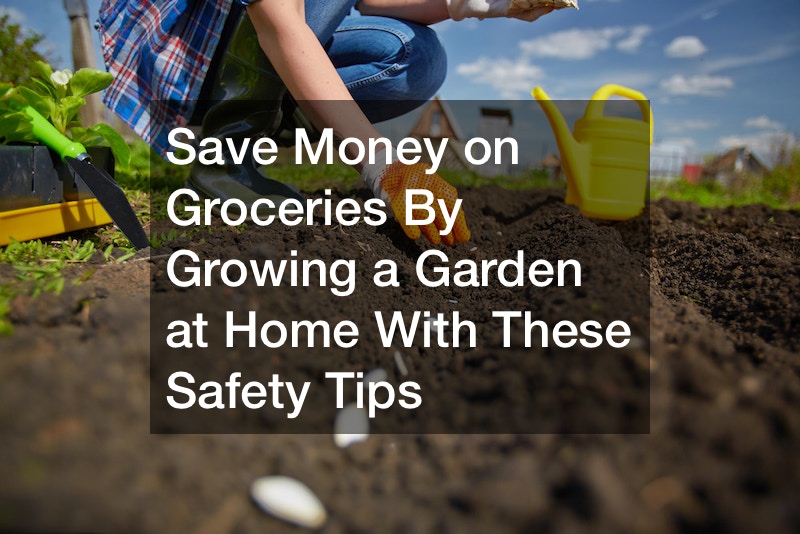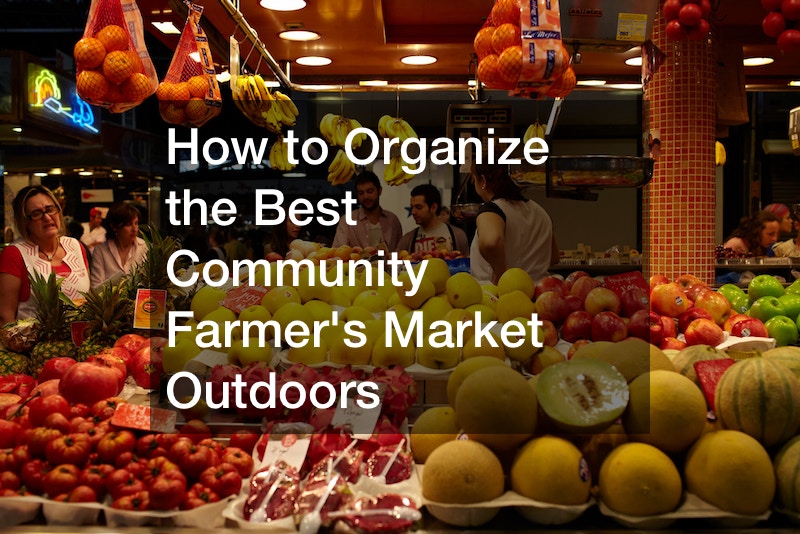
With rising inflation, people are looking for ways to control their living expenses. This involves being frugal with what you have or starting your home garden if you have a green thumb. It’s time to stop buying your groceries from stores, start growing your own, and save money. This decision comes with costs, from the type of crops to the number of vegetables you want to grow, including derived yields, notwithstanding other factors, such as poultry rearing. That notwithstanding, the most important thing is to start, and yesterday was the best time; now is the next best. Here’s all you need to know about how to grow a home garden and stop buying groceries.
1. Test The Soil
Before beginning your journey to growing a garden at home, do a soil test to determine its acidity (pH) and essential nutrient levels, which include potassium, phosphorus, calcium, magnesium, sodium, sulfur, zinc, copper, and manganese. These tests are essential in helping you decide what to plant, soil preparation, and fertilization. Over-fertilization stimulates excessive plant growth and can increase your propensity to disease.
To get an accurate soil absorption test, collect soil samples from your garden and take them to a soil testing laboratory. Note that test kits may be cheaper and commercially available but unreliable as they don’t indicate the needed amount of lime but only measure the soil pH. Several factors contributing to determining the amount of lime needed to raise soil pH are organic matter content, soil texture, type of crop, target pH, cation exchange capacity (CEC), soil acidity level, amount and type of clay, and current pH.
Soil test report accuracy depends on the quality of the soil sample. Combine subsamples in at least six to eight garden areas with chrome-plated or stainless steel tools to obtain a more representative sample for testing. A soil coring tool is the best for collecting soil samples, but you could use a trowel or shovel if unavailable. Don’t use bronze, brass, or galvanized tools to avoid contaminating the soil sample with zinc or copper. Put the soil samples in a clean plastic bucket before presenting them to the lab to avoid contamination.
2. Reduced Visits To The Doctor

Eating healthy food is good for your health. Most vegetables, including fruits, are great for your health as they contain vitamins A and C, water, fiber, and minerals like potassium. Eating fresh vegetables and fruits from your home garden gives your body the necessary nutrients and vitamins to function correctly. Also, most fruits and vegetables contain phytochemicals, including antioxidant compounds that strengthen your immunity and weight loss solutions.
To get nutrients from vegetables and fruits, ‘eat a rainbow.’ Eating various different-colored vegetables and fruits gives you all the nutrients you need to be healthy. Although eating fresh fruits and vegetables is healthy and a great idea, there has been a compromise on the quality and safety of produce supplied to grocery stores; for instance, E.coli in spinach and salmonella in jalapeno peppers. Warnings are happening yearly. If you are concerned with pesticide residues on produce you get from grocery stores, growing yours is a better way to ensure a safe food supply.
Not only will you avoid biological and pesticide contamination by growing a garden at home, but you will also save money. Usually, this will depend on the type and amount of crop you grow; of course, you want to grow vegetables and fruits you like. Aim to produce vegetables and fruits that yield pounds of produce in summer if you spend a few dollars on supplies, seeds, and plants in spring.
3. Clear The Ground
It’s essential to check for a potential garden site during the growing season. Most vegetables and fruits require at least six hours of direct sunlight. Ensure buildings and trees do not shield the area from sunlight from late morning through the afternoon. If you notice a tree shading your garden, chop it off and do stump grinding, especially for black walnut trees. This enhances your garden’s aesthetic and keeps off unwanted insects.
When you remove a tree in preparation for growing your home garden, the soil around the area is different from the adjacent spaces. These differences highly affect the growth of new plants as the water level in that area is compromised. The soil can be severely affected if you use chemicals or salt for stumping. It’s essential to allow the soil to recover after removing a tree, as it can highly impact the growth of new plants.
Scrape leaves, mulch, and debris from your garden’s surface and ensure water doesn’t significantly flow or puddle during storms and heavy rains. Do away with steep slopes to avoid soil erosion and low spots to avoid frost from settling in late spring or early fall. Have a water source, for instance, a hose for watering your home garden during dry spells.
4. Rear Chicken

Apart from growing vegetables and fruits, you could rear eggs-laying chickens and get free manure for your home garden. A hen has a gestation period of 21 days. Besides rearing them for consumption, you can supply wholesale chicken to grocery stores. This saves you money, and you won’t buy eggs. It’s an income-generating activity.
When rearing hens, there are non-negotiable things, such as protection from predators, access to adequate nutrition, protection from predators, and hydration. These are some of the requirements for rearing quality chicken. A bit of ‘give it a try’ attitude and ingenuity can help cut down your costs. Apart from being safe and sturdy, one standard-size chicken should occupy three to five square feet to ensure adequate ventilation
Remember that chickens get sick and can unexpectedly pass away. Have a veterinarian in your area who treats chickens. Also, have the right tools for treating illnesses and injuries on your chicken since such specialists are rare. Be sure chickens are permitted in your home area, as some residential areas have bans on roosters and only allow hens.
5. Invest in Weeding Tools
When growing a garden at home, you are also growing weeds, which compete for water, sunlight, and nutrients. Weeding and pruning is an unavoidable part of the job. Besides your kitchen appliances, which require kitchen appliance repair service from time to time, you should invest in high-quality garden appliances.
To weed out unwanted plants, which include crabgrass, dandelions, or plantain, you need to invest in high-quality tools for weeding. This will depend on the size of your garden and the types of weeds that grow in your area. ‘High-quality products will stand the test of time and stand up to tough roots,’ Says Ariana Lappini, The Birch Arbor Gardens.
Start small when growing a garden at home if you are a beginner. It’s better to get thrilled by your produce in a small garden than get frustrated by the time commitment a big one requires. Learn gardening basics before investing time and money in your home garden. You will find out if it’s something you like spending time on and how much produce you and your family can enjoy throughout the summer.
6. Keep Your Garden Safe
Growing a garden at home can seem daunting as there are many things to consider. Fencing adds beauty to your garden; pick the right one for your yard. If you want to keep your garden safe from predators and intruders, getting a fence will enhance its security and that of your home.
A quality fence from a reliable fence installation company makes you feel safer in your home, even when people aren’t around. If you install a backyard or garden fence, you’ll increase the safety of animals and poultry in your yard. You could have a neighbor sharing backyard space with you, which could be challenging when deciding who gets what part of the yard. Garden fencing helps you mark your territory, clearly identifying parts of the garden that are yours and those that belong to your neighbor. Ultimately, you’ll save money on groceries if your home garden is safely fenced in.
7. Have A Water Reliable Water Source Nearby

Locate your garden close to a water source. A flourishing garden needs water throughout the year. You’ll need a reliable water source to continue providing critical nutrition to your family and help you save money on groceries. For seeds to germinate, they require lots of moisture. In their first few weeks, plants require a lot of water for stem and root development.
Water is absorbed deeper into the soil, encouraging the roots to grow deeper, thus getting the necessary nutrients to keep the plant healthy. You could install a garden water filtration in your home garden to eliminate chlorine in water. Chlorine kills the good bacteria in plants that gardens need to survive. Water filtration restores bacteria balance in the soil, making your plants more robust and healthier.
Getting a plumber to fix the water system when growing a garden at home is essential. A plumber will install drip irrigation and soaker hoses on a timer, which will help you minimize water wastage and save the time you’d have spent watering your garden.
8. Pick Your Gardening Spot Carefully
When growing a garden at home, you want it to look full and luscious, and it’s easy to over-plant. Find out the landscape products required for your home garden to grow. You’ll need to know how much space is recommended for each plant. Some plants survive for more than two years and should be planted 18 inches apart, which paves the way for new growth and makes your garden look fuller sooner rather than later.
Knowing the plant’s height when fully grown is significant. Plant shorter crops at the front of your garden and taller ones at the back. Some need maximum sun exposure, while others need shade. It’s, therefore, essential to understand the amount of light each plant requires to survive. For instance, fruit-bearing flowers don’t need much sun, while vegetables thrive well in at least six hours of sunlight daily.
Give your garden a mix of cool and warm-weather vegetables to continuously give you a harvest of vegetables, fruits, and herbs through summer, spring, and fall. For instance, consider growing greens like arugula, peas, lettuce, broccoli, and carrots in early spring. After harvesting cool-weather crops, you could go for hot-weather favorites like eggplant, peppers, tomatoes, and herbs. Kale, potatoes, and cabbage do very well during fall.
9. Get Ready to Deal With Pests and Diseases

Avoid big pests like rabbits and deer, which can wreak havoc when growing a garden at home. Ensure your fence is at least 8 feet tall to keep animals like deer from jumping into your home. The fence should also be six inches beneath the soil surface to stop rabbits and squirrels from entering your home garden.
You can pick up giant insects and caterpillars by hand and drop them in a bucket with soapy water or purchase insecticidal soap sprays from garden stores for limited infestation. Carefully follow the manufacturers’ instructions that come with the pest control chemicals you use.
Always water the soil, not the leaves, to reduce the likelihood of fungal diseases when growing a garden at home. If you’re using a sprinkler, use it during the day so the leaves don’t dry by nightfall. If there’s a crop disease in your garden, remove the affected crop and dispose of it in an environmental waste disposal bin for collection later. Grow disease-resistant plants, and remember to rotate them yearly. This reduces microbes-causing diseases in plants by stopping their spread.
Growing a garden at home saves you money and benefits your family in many nutritional ways. It enhances your food safety and security and helps you understand the history of plants in your garden. You also learn which pesticides are ideal for tackling pests and stopping their spread. Since good nutrition keeps your family members healthy, ensure your garden has nutrient-dense crops. The saying, an apple a day keeps the doctor away, is true when growing a garden at home. The bottom line is growing vegetables can be rewarding in many ways, but you’ll need to learn the basics of growing one at home first, and this article will set you in the right direction.



